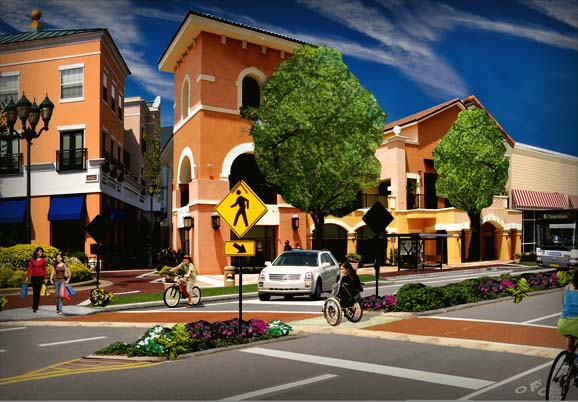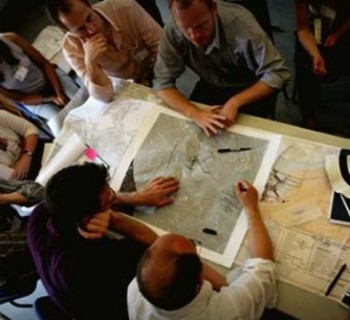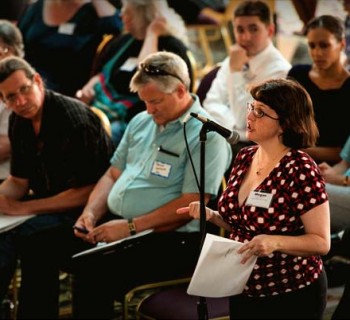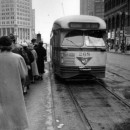DETROIT—In May 2010, the Michigan Department of Community Health awarded the Detroit Department of Health and Wellness Promotion—now the Institute for Population Health—a complete streets grant. The grant called for three essential actions:
- the formation of a Complete Streets Coalition;
- processes to inform and engage the public about Complete Streets; and
- to pass a citywide Complete Streets ordinance.
Three years later, much has been done toward meeting each of these objectives; however, the City of Detroit still has yet to adopt a complete streets ordinance.
Complete streets are roads designed to safely accommodate multiple forms of transportation to help make neighborhoods and communities more walkable, livable, and offer a greater quality of life for residents.
An ordinance usually calls for the adoption of design and construction standards to meet environmental needs (e.g., reducing street runoff and planting trees) and provide safe transportation lanes or infrastructure accessible to all users, including motorists, bicyclists, pedestrians, and disabled individuals.
Complete Streets Coalition
With the support of the MDCH grant and funding from the Detroit Food and Fitness Collaborative, a Complete Streets Coalition formed in 2010. Since then, it has grown in strength, size, and diversity of stakeholders.
The group began with the Myra Tetteh, of the Detroit Food and Fitness Collaborative, as chairperson; Todd Scott, Detroit Greenways Coordinator for the Michigan Trails and Greenways Alliance; and Prasad Nannapaneni of Detroit Public Works.
It now has five to seven core members present at each meeting, with key stakeholders including DDOT, MDOT, City Planning Commission, City Planning and Development Department, SEMCOG, Warriors on Wheels, and Transportation Riders United. Other organizations and community members attend the quarterly meetings on an as-needed basis.
Despite the fact that Detroit still has not adopted the complete streets ordinance submitted by the Coalition last year, the Coaltion has made tremendous strides in educating and spreading awareness about complete streets among the public, and engaging stakeholders to participate in the Coalition.
Since 2011, there have been more than 30 community events all over the city, either hosted by the Coalition, or with Coaltion representatives presenting at existing meetings. The level of interest and turnout has been impressive, with anywhere from 20 to 150 people in attendance. Many residents leave meetings asking how they can get bike lanes or improved sidewalks in their own neighborhoods.
Another great outcome has been the collaboration and relationships developed among stakeholders such as AARP Michigan, Wayne State University, and Southeast Michigan Council of Governements. These and other partners have helped fund, organize and get people to show up at community events.
Lastly, with the development of the Coaltion, the City chose to increase its commitment to add about 70 miles of bike lanes beyond the 20 they originally planned to complete this year. In addition to other initiatives, this adds up to about 100 miles of bike lanes coming in 2013 alone.
Ordinance Remains in Legal Limbo
The draft ordinance is currently in the hands of the City Planning Commission, for what will hopefully be the final revisions. If the DPW, City Planning and Development, and the City’s Law Department then sign off on this final version, it will go straight to City Council—hopefully to be passed before the next term.
So what’s been the hold-up?
According to Tetteh, there are several obstacles that have delayed passage of the ordinance.
First, there is reluctance on behalf of the DPW to support the ordinance due to what they consider overly restrictive language. There is a delicate balance between outlining specific requirements and allowing room for flexibility in the ordinance language.
There is also uncertaincy about transportation funding and how city governement is going to operate in the near- and long-term. Changing adminstrations and the newly appointed emergency financial manager make for a dynamic political environment that slows down government processes and senior management decisions in the interim.
Perhaps the greatest barrier is City employee turnover. According to Tetteh, within just the past 18 months, many champions of complete streets have stepped down from their positions of influence, slowing the Coalition’s momentum.
For example, Chris Brown at the Mayor’s office recently announced his resignation; Kenneth Cockrel Jr. of City Council announced he won’t be running for re-election; Laura Buell of the City Planning Commission recently stepped down; and another employee within the City’s Law department recently retired whom was instrumental in developing the ordinance language.
Changing Tides
Luckily, the deck is finally looking stacked in the Coalition’s favor. The May meeting of the Coalition was one of its largest, and interest in complete streets is growing beyond just the Coalition’s efforts.
The highly publicized Detroit Future City plan highlights complete streets as a prominent feature of future corridors throughout the city. Representatives from the Detroit Economic Growth Corporation, the entity responsible for overseeing implementation of the framework, have already expressed a strong interest in hleping making them a reality.
Meanwhile, complete streets activities north of the city along Woodward Avenue are also helping build momentum.
Hannah Remtema, of Parsons Brickenhoff and deputy project manager of the Woodward Avenue Action Association’s Complete Streets initiative, has been a critical liaison. Similarly, Todd Scott of the Detroit Complete Streets Coalition, also sits on the WAAA. Each wants to the other to succeed, and growing the support along all of Woodward will help both groups meet their goals in the long-run.
Moving Forward
For now, the priority according to Tetteh, is to get the ordinance passed and on the books; there will always be room for improvement later on. “Once passed, it’s going to mean a lot of collaboration between city departments...For example, home demolitions will have to coordinated with DPW so as not to damage a newly repaired sidewalk.”
After three long years, Tetteh remains optimistic. She sees this as a holistic approach to making Detroit more pedestrian and bike friendly, while improving the economy, health and safety.
For more information and to get involved, visit detroitcompletestreets.org










